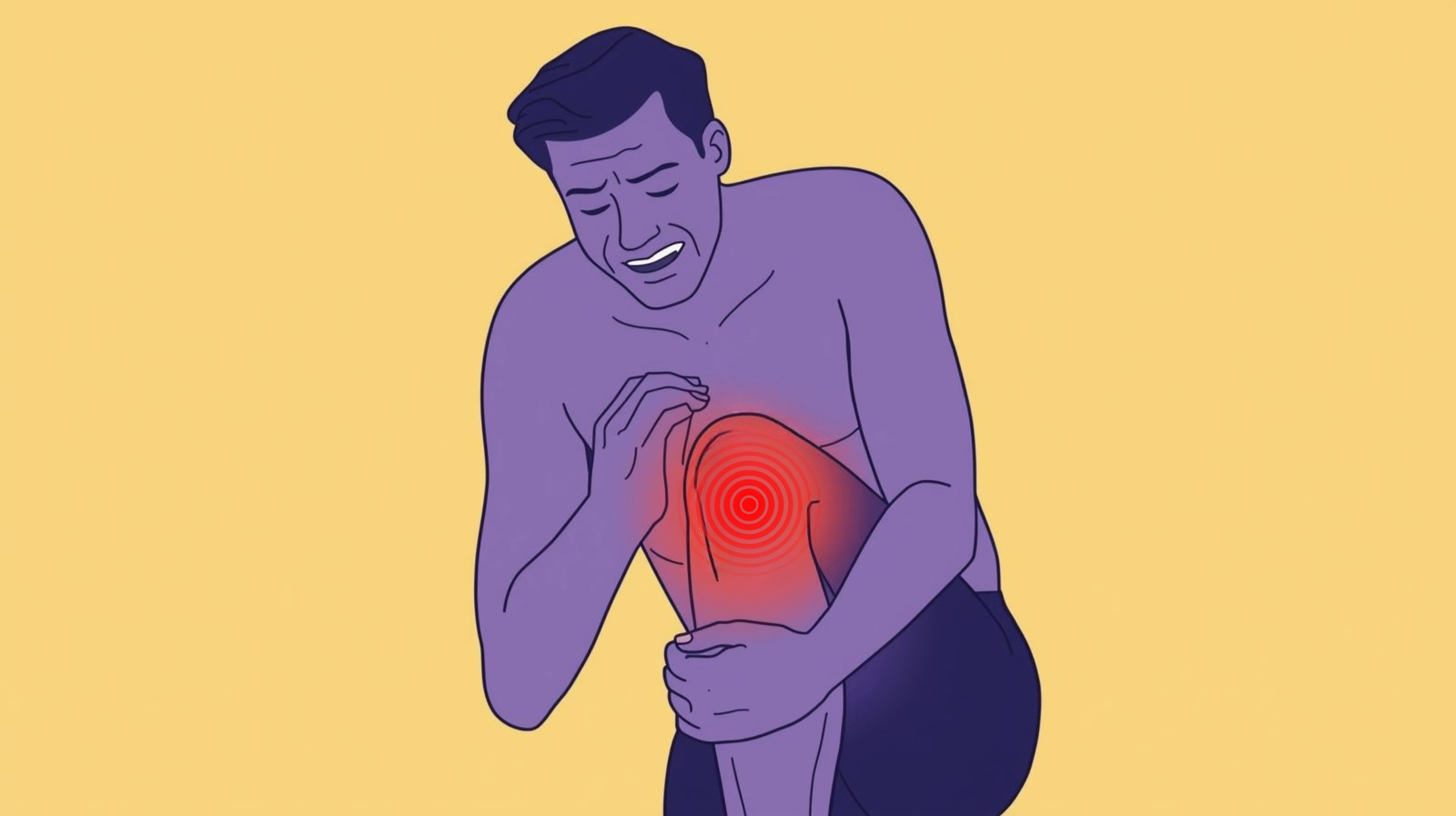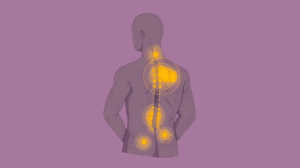Joint inflammation is a typical health condition in millions of individuals throughout the world, including young adults and senior citizens. In such cases, your immune system becomes very weak and immediately reacts when you are injured, infected, or sick with chronic diseases; as a result, your joints swell up and redden, causing stiffness and pain. Short-term inflammation, on the other hand, is the natural process of the body to enhance the healing of the tissues. However, chronic inflammation may lead to damage of joints in the long run, resulting in pain, restriction of movement and even complete disability.
Joint inflammation can occur due to several reasons. Arthritis is the main cause, which are of three types, namely, rheumatoid arthritis (RA), osteoarthritis, and gout. Autoimmune diseases, such as lupus, target the immune system to attack normal cells unintentionally. Chronic stress and injuries are also potential causes of inflammation. Lifestyle choices such as smoking, obesity, poor diet and inactivity can worsen the condition.
Treatment of inflammation should take place as early as possible. Along with accelerating the process of joint wear and tear, uncontrolled inflammation may cause heart disease and other ailments in the rest of the body. Fortunately, natural and medical cures exist. Supplements, exercise, stress reduction techniques, and a proper, balanced diet are all natural anti-inflammatory means of reducing inflammation and improving life. Worst-case scenarios may require medical assistance, e.g., biologics, antibiotics, or NSAIDs.
This comprehensive guide delves into the science of inflammation, its causes, signs, and the natural solutions to this. It also covers long-term joint health recommendations, medical alternatives to the severe cases, and prevention.
Understanding Joint Inflammation
What Happens During Inflammation?
Inflammation is the body’s natural response to injury, infection, or irritants. When a joint is inflamed, the immune system releases chemicals called cytokines and prostaglandins. These chemicals increase blood flow to the affected area, leading to redness, heat, swelling, and pain. At the same time, immune cells infiltrate the joint to repair damaged tissue. While this response is protective in the short term, persistent inflammation can damage cartilage, erode bone, and reduce joint mobility.
During inflammation, the synovial membrane lining the joint thickens, and excess fluid accumulates. This causes stiffness and pain, which can limit movement and affect daily activities. Over time, chronic inflammation can lead to structural changes in the joint, resulting in deformities, decreased function, and long-term disability.
Acute vs. Chronic Inflammation
- Acute inflammation: Occurs suddenly, typically due to injury, infection, or overuse. It usually resolves within days to weeks and is characterized by redness, swelling, and localized pain.
- Chronic inflammation: Develops over months or years, often due to autoimmune disorders or persistent stress on joints. Chronic inflammation can gradually damage cartilage and bones, leading to osteoarthritis or rheumatoid arthritis.
Conditions Linked to Joint Inflammation
Several health conditions are strongly associated with joint inflammation:
- Rheumatoid arthritis (RA): An autoimmune disorder where the immune system attacks joint linings, causing pain, swelling, and stiffness.
- Osteoarthritis (OA): Degenerative joint disease caused by cartilage breakdown; inflammation occurs as a secondary response.
- Gout: Characterized by uric acid crystal deposits in joints, causing sudden, intense inflammation.
- Lupus: Autoimmune condition affecting joints and multiple organs, resulting in chronic inflammation.
- Bursitis: Inflammation of fluid-filled sacs (bursae) surrounding joints due to injury or overuse.
Why Inflammation Worsens if Untreated?
Without intervention, chronic inflammation leads to cartilage breakdown, joint instability, deformities, and reduced mobility. It can also increase the risk of systemic complications like heart disease, diabetes, and metabolic disorders. Early management, therefore, is essential to prevent permanent damage and maintain quality of life.
Causes and Risk Factors
Joint inflammation results from a combination of factors:
- Genetic predisposition: Family history of autoimmune conditions or arthritis increases susceptibility.
- Age and wear-and-tear: Older adults are more prone to osteoarthritis due to natural cartilage degeneration.
- Lifestyle factors: Sedentary behavior, poor diet, obesity, smoking, and excessive alcohol intake can worsen inflammation.
- Stress and lack of sleep: Chronic stress elevates cortisol levels, promoting inflammation, while insufficient sleep impairs tissue repair.
- Environmental triggers: Repetitive strain, workplace injuries, and exposure to toxins can aggravate joint health.
Understanding these risk factors enables proactive steps to reduce inflammation, such as maintaining a healthy weight, exercising regularly, managing stress, and improving sleep quality.
Symptoms to Watch For
Recognizing joint inflammation early helps prevent long-term damage. Common symptoms include:
- Swelling, redness, and warmth around the affected joint.
- Stiffness, especially in the morning or after periods of inactivity.
- Pain that worsens with movement or weight-bearing activities.
- Reduced mobility, making everyday tasks difficult.
- Fatigue and systemic symptoms, particularly in autoimmune conditions.
Seek medical attention if symptoms persist beyond two weeks, worsen over time, or occur alongside systemic issues like fever or unexplained weight loss.
Natural Ways to Reduce Inflammation in Joints
Natural remedies can significantly reduce joint inflammation, improve mobility, and enhance quality of life. These strategies include dietary changes, lifestyle adjustments, physical activity, supplements, and home therapies.

1. Diet and Nutrition
Food plays a pivotal role in managing inflammation. Adopting an anti-inflammatory diet can reduce cytokine production and support joint health.
Key Anti-Inflammatory Foods Include:
- Fatty fish: Salmon, sardines, and mackerel provide omega-3 fatty acids that suppress inflammatory pathways.
- Olive oil: Contains oleocanthal, a natural compound that mimics ibuprofen’s anti-inflammatory effects.
- Berries: Blueberries, strawberries, and raspberries are rich in antioxidants that reduce oxidative stress.
- Leafy greens: Spinach, kale, and broccoli contain vitamins and minerals that promote joint repair.
- Spices: Turmeric and ginger provide potent anti-inflammatory compounds.
Foods to Limit or Avoid:
- Processed sugars and refined carbohydrates
- Red and processed meats
- Fried foods and trans fats
- Excessive alcohol
Hydration is essential. Drinking adequate water keeps cartilage lubricated and reduces joint stiffness.
Sample Anti-Inflammatory Meal Plan:
- Breakfast: Oatmeal with berries and walnuts
- Lunch: Grilled salmon with quinoa and steamed spinach
- Snack: Green tea with almonds
- Dinner: Lentil soup with turmeric and leafy greens
2. Lifestyle Changes
Maintaining healthy habits supports long-term joint health:
- Maintain a healthy weight: Even a 5-10% reduction in body weight can relieve stress on weight-bearing joints.
- Stress management: Yoga, meditation, journaling, and deep breathing reduce cortisol and lower inflammation.
- Prioritize sleep:7-9 hours of quality sleep supports tissue repair.
- Limit alcohol and smoking: Both increase oxidative stress and exacerbate inflammation.
3. Exercises and Physical Activity
Exercise strengthens muscles, improves joint stability, and reduces stiffness:
- Low-impact exercises: Swimming, cycling, and walking relieve joint stress while improving circulation.
- Flexibility routines: Stretching, yoga, and tai chi enhance mobility.
- Strength training: Builds supportive muscles around joints, preventing overuse injuries.
- Consistency: Regular, gentle activity is more effective than sporadic intense workouts.
4. Supplements and Herbs
Several natural supplements aid joint health:
- Omega-3 fatty acids: Reduce inflammatory cytokines.
- Glucosamine and chondroitin: Support cartilage repair and slow arthritis progression.
- Curcumin (turmeric extract): a powerful anti-inflammatory agent.
- Boswellia, green tea, and ginger: Offer antioxidant and anti-inflammatory benefits.
5. Home Remedies
- Hot and cold therapy: Cold reduces swelling; heat eases stiffness.
- Epsom salt soaks: Magnesium promotes muscle relaxation.
- Essential oils: Peppermint, eucalyptus, and lavender provide soothing relief.
- Gentle massage: Improves circulation and reduces stiffness.
Medical Approaches for Severe Cases
Natural remedies are often effective for mild to moderate symptoms, but medical treatment may be necessary for severe or persistent joint inflammation. Over-the-counter NSAIDs like ibuprofen and naproxen provide quick relief. For more serious conditions, doctors may prescribe DMARDs (disease-modifying antirheumatic drugs) or biologics to slow disease progression.
Physical therapy is another valuable option, teaching patients safe exercises that improve mobility. In some cases, corticosteroid or hyaluronic acid injections are used to control inflammation directly in the affected joint. Consulting a healthcare provider is essential for tailoring treatment to individual needs and avoiding side effects.
Prevention and Long-Term Joint Health
Sustained habits can prevent inflammation from becoming chronic:
- Follow an anti-inflammatory diet.
- Stay active with joint-friendly exercises.
- Schedule regular joint checkups.
- Balance activity with rest.
- Practice stress management and proper sleep hygiene.
Conclusion
Most individuals suffer joint inflammation that may cause chronic pain, impairment of movement and even loss of ability to perform tasks in case of non-treatment. Fortunately, it can be prevented and even controlled both through natural and medical methods. Natural management is all about changing your diet, which includes the replacement of the anti-inflammatory diet with the high content of leafy greens, omega-3 fatty acids, and spices like ginger or turmeric. Some practices that can further decrease the inflammation are changing your lifestyle and prioritizing sleep, learning stress-reduction skills, and maintaining healthy weight. Exercise, particularly strength building work and low impact exercises, boost the support system of the body parts around joints. Home cure and supplements may also come in handy.
DMARDs, NSAIDs, biologics and physical therapy can be extremely beneficial to individuals with more severe or chronic complaints. Above all, long-term joint health can be guaranteed by adopting healthy habits in the daily routine. It is possible to eliminate the pain, enhance mobility, and live healthier and more active lives without the constraints of inflammation of the joints, provided that people should start taking impactful measures now.
So, this is one kind of pain which you can manage at home through natural remedies. But, what about the natural cure of other pain which also bothers your daily life? Check these to know more:
Frequently Asked Questions
1. What is the fastest way to reduce joint inflammation naturally?
Cold therapy, rest, and anti-inflammatory foods such as fatty fish, turmeric, and ginger can provide rapid relief.
2. Which foods are best for reducing joint pain and swelling?
Salmon, tuna, olive oil, leafy greens, berries, ginger, and turmeric are effective in reducing inflammation.
3. Can exercise help with joint inflammation or make it worse?
Low-impact exercises like swimming, cycling, and yoga help reduce stiffness and strengthen supporting muscles. Overexertion, however, can worsen inflammation.
4. Are supplements like glucosamine and omega-3 effective for joint health?
Yes, omega-3 fatty acids reduce inflammation, while glucosamine and chondroitin support cartilage and slow arthritis progression.
5. How do I know if my joint inflammation is caused by arthritis?
Persistent, symmetrical inflammation, particularly with morning stiffness lasting over 30 minutes, may indicate arthritis. A medical evaluation is necessary for diagnosis.
References
- Stumpf, F., Keller, B., Gressies, C., & Schuetz, P. (2023). Inflammation and nutrition: friend or foe?. Nutrients, 15(5), 1159. https://doi.org/10.3390/nu15051159
- Sun, J., Han, S., Liang, J., Liu, W., Xing, Z., Li, Q., … & Chu, X. (2025). The epidemiology and burden of global osteoarthritis: a systematic analysis based on the Global Burden of Disease database. Aging Advances, 2(4), 123-131. DOI: 10.4103/AGINGADV.AGINGADV-D-25-00003
- Medzhitov, R. (2021). The spectrum of inflammatory responses. Science, 374(6571), 1070–1075. https://doi.org/10.1126/science.abi5200
- Liu, M., Wang, J., Song, Z., & Pei, Y. (2025). Regulation mechanism of curcumin mediated inflammatory pathway and its clinical application: a review. Frontiers in Pharmacology, 16, 1642248. https://doi.org/10.3389/fphar.2025.1642248
- Singh, J. A., Saag, K. G., & Bridges, S. L. (2016). 2015 American College of Rheumatology guideline for the treatment of rheumatoid arthritis. Arthritis & Rheumatology, 68(1), 1–26. https://doi.org/10.1002/art.39480
- Wahba, N. M., & Mishriky, F. (2021). Role of omega-3 fatty acids in reducing joint inflammation. Journal of Clinical Rheumatology, 27(2), 65–72. https://doi.org/10.1097/RHU.0000000000001444























